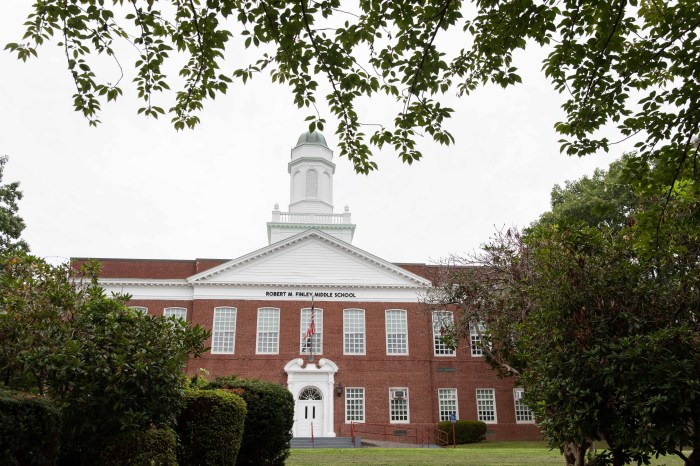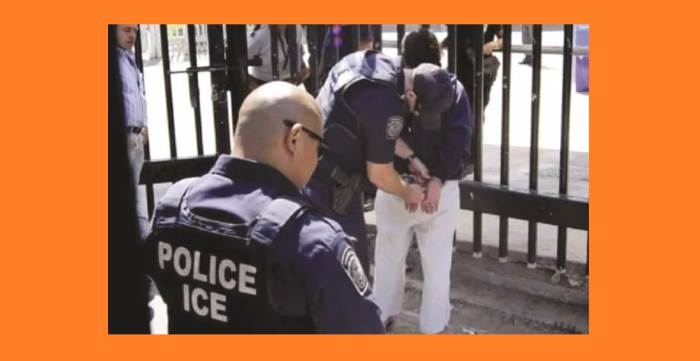Four Nassau County police officers watched as Leon McCoy drove into the parking lot of National Wholesale Liquidators in West Hempstead, a known hotspot for drug activity.
McCoy pulled up alongside a blue Nissan Stanza, hopped out, and entered its rear passenger-side door. Someone else was sitting in the front passenger seat. McCoy handed the driver some money; the driver passed back two small packages in return.
The officers rushed in, arresting McCoy and the driver, 22-year-old Germaine McCants.
“That’s all I had,” McCants blurted.
His front-seat passenger “didn’t have nothing to do with it,” said McCants.
Police seized the two packages from McCoy. They found 11 more tied to McCants’ boxer shorts. It was March 8, 2006, according to court documents. In September of that year, the case went to trial.
The evidence appeared indisputable. Prosecutors for the Nassau County District Attorney’s Office, working under newly elected District Attorney Kathleen Rice, had a key witness: Det. Jason Pinsky, a nine-year veteran of the Nassau County Police Department laboratory, where drugs were tested for identification, fingerprints were analyzed, and blood and ballistics work was conducted.
“He is going to tell you what the results of those tests were,” prosecutors told jurors in their opening statement. “Each and every one of the tests that he conducted on those drugs, he will tell you, confirmed the fact that there was cocaine, cocaine in the 11 bags that were found on the defendant when the bags were taken out of his boxer shorts, and cocaine in the two bags that were found on Leon McCoy.”
Pinsky, who has since been reassigned, testified he analyzed crack and cocaine tens of thousands of times at the lab during his tenure. Over defense objections—including their opening statement that Pinsky did not properly or accurately conduct the tests of the subject substances; also harping on prosecutors’ failure to turn over documents relating to the maintenance and calibration of instruments utilized by him during his testing process—Pinsky was declared an expert by the court.
McCants was found guilty. Now 28, he’s currently serving a 12-year sentence for third degree criminal possession of a controlled substance, third degree criminal sale of a controlled substance and fourth degree criminal possession of a controlled substance—based on Pinsky’s testimony and lab results.
The problem is, argues McCants’ Rockville Centre attorney Virginia A. Conroy to Acting Supreme Court Justice Joseph C. Calabrese in a March 1 motion, Rice and her office failed to disclose a slew of documents that would have revealed “that the lab was found, and acknowledged to be non-compliant with numerous ‘ESSENTIAL accreditation criterion’ many of which directly affected, and had a fundamental impact on the work product of the controlled substance discipline, and the integrity of evidence.” These findings, Conroy argues, “clearly establish the unreliability of Det. Pinsky’s testing and analysis.”
One such document—a Jan. 5, 2006 letter from the then-chair of the New York State (NYS) Commission of Forensic Sciences to then-Nassau County Police Commissioner James H. Lawrence—states that an October 2005 mid-cycle inspection report from the American Society of Crime Laboratory Directors/Laboratory Accreditation Board (ASCLD/LAB) [a Missouri-based nonprofit responsible for ensuring public and private forensic science labs around the country and the world are in compliance with universally accepted accrediting standards] is the second since 2003 determining Nassau’s lab to be in gross non-compliance.
By not sharing such information with McCants’ defense, Conroy contends the Nassau District Attorney’s Office committed Brady violations—referring to the landmark 1963 case Brady v. Maryland, in which the U.S. Supreme Court ruled that the prosecution must disclose evidence or information that is favorable to a defendant.
McCants’ conviction should be set aside and the judgment vacated, she asserts.
The case is just one of a growing number of felony drug convictions that at one time were regarded open-and-shut, but now, say experts, have a very real and plausible chance of getting overturned due to gross violations at the now-closed Nassau County Police Crime Lab.
Who knew what, and when, within the Nassau County Police Department (NCPD) and Nassau District Attorney’s Office is currently the subject of an intense investigation by NYS Inspector General (IG) Ellen Biben, who was assigned the task by Gov. Andrew Cuomo in February. Dozens of current and former county officials and police personnel have been subpoenaed and already questioned in the probe.
Newly discovered documents reviewed by the Press and interviews with more than a dozen current and former police, governmental and civilian personnel familiar with the embattled lab—many of whom refused to be quoted by name for this story due to the ongoing investigation—suggest some of Nassau’s top law enforcement and governmental officials may have known about the damning issues at the facility long before they’re publically letting on.
The revelations are the latest in a series of questionable conduct exposed by the Press regarding secrecy within the NCPD. In March the Press reported on the clandestine activities of a little-known nonprofit operating within Nassau County police headquarters [“Membership Has Its Privileges: Is NCPD Selling Preferential Treatment?” March 31] and the department’s reluctance to fulfill Freedom of Information Law requests regarding the details of asset forfeiture funds—critical monies derived from and mandated to be used toward crime fighting—last month [“The NCPD Refuses to Show Us the Money,” June 2].
At their worst, the new allegations suggest a sinister game of Pass The Buck, an intentional, possibly criminal shirking of responsibility, a cover-up among law enforcement’s upper ranks, at the expense of taxpayers and justice. At the very least, if officials are taken at their word, it’s evident a pervasive ignorance if not reckless negligence among those entrusted with the highest degree of responsibility to ensure lawfulness for its citizens undeniably exists.
“The lab is an onion,” explains Joseph A. Lo Piccolo, president of the Nassau County Criminal Courts Bar Association (NCCCBA) and partner at Garden City-based Hession, Bekoff, Cooper & Lo Piccolo, LLP. “It’s slowly getting peeled back one layer at a time, either by the defense attorneys or by other investigative means to establish what was done right, what was done wrong, and unfortunately—an onion gets sweeter as you get to the core? That’s not the case here.”
Lo Piccolo says disclosures regarding the troubled facility are popping up with each new trial worked by him and his organization’s more than 150 defense attorneys.

































